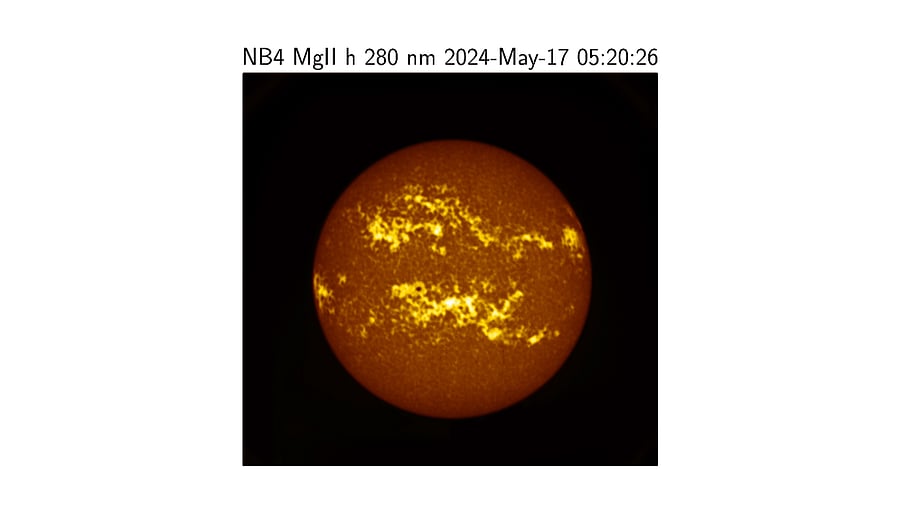
A SUIT image identifies bright, active regions on the solar disk. Solar flares may originate in these regions due to changes in magnetic fields.
Credit: ISRO
Bengaluru: Two payloads onboard Aditya-L1, India’s first space-based observatory to study the sun, have provided insights into last month's solar flares and coronal mass ejections (CMEs).
These X-class and M-class flares on the sun’s active region AR13664 were associated with the CMEs on May 8 and 9 which set off a geomagnetic storm that hit the earth on May 11. The Solar Ultra Violet Imaging Telescope (SUIT) and the Visible Emission Line Coronagraph (VELC) acquired images of the sun after the eruptive events.
Four other payloads onboard the observatory had captured these events between May 8 and 11. SUIT and VELC did not observe the May 10-11 event because they were closed for calibration, till May 14.
SUIT images the photosphere (the sun’s visible surface) and chromosphere (the second layer of the sun’s atmosphere) in near-UV while VELC studies the corona, the outermost layer of the solar atmosphere, and the dynamics of CMEs.
The Indian Space Research Organisation (ISRO) on Monday released images of the sun recorded by SUIT, on May 17, that identify the magnetically active regions on the sun’s surface. The sun is moving towards the solar maximum, as reflected in the several active regions marked closer to the equator, ISRO said. Solar maximum denotes the middle phase of a solar cycle that the sun’s magnetic field goes through around every 11 years.
SUIT, through six different wavelengths, observed the active regions that trigger solar flares, and identified sunspots and plages, the bright patches around the active regions.
These observations help in understanding the processes through which solar flares heat the chromosphere, space weather patterns, and energy transfer in the solar atmosphere, the space agency said.
On May 14, VELC marked AR13664 in an observation through one of its spectroscopic channels. VELC uses an occulting disk to block out the bright light of the solar photosphere to study the corona.